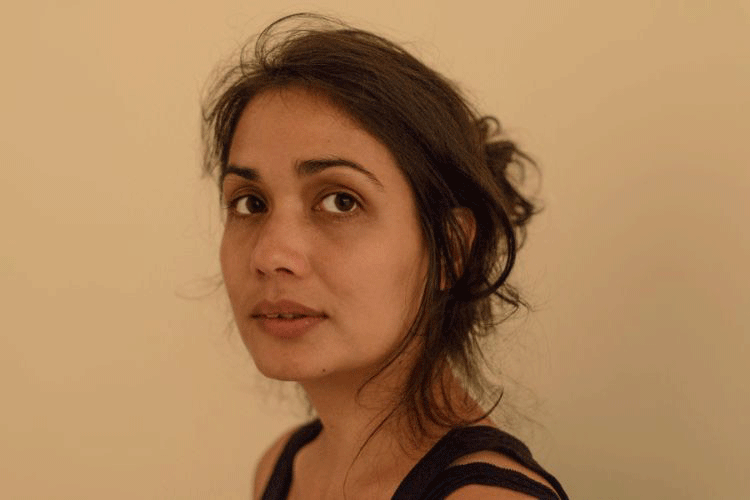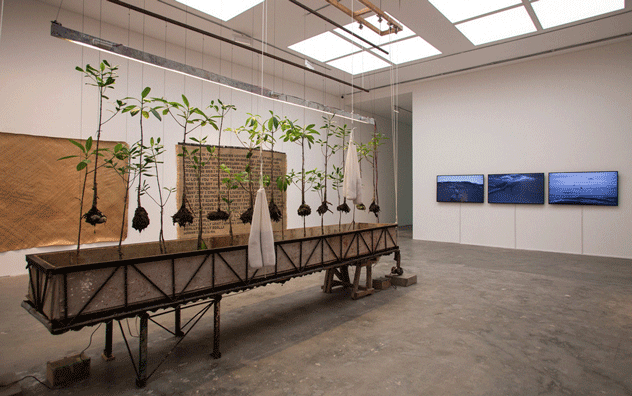Born to a family who is deeply in touch with the sea, Dutch-Filipino Artist Martha Atienza amplifies the call of United Nation Sustainable Development Goals on Life Below Water as she brings into the limelight the environmental degradation of our oceans and the effects of climate change on the changing sea terrain.
Atienza was born in the Philippines and simultaneously resides in Rotterdam, Netherlands and Bantayan Island, a small Cebu island. She came from a long line of seafarers, tracing back to her grandfather who is a lighthouse watcher, her Filipino father who is a sea captain and her Dutch mother who works for a Holland American Line.

She studied Mixed Media and Media Art in the Academy of Visual Arts and Design in the Netherlands. The main theme of her art centers around mixing her Filipino and Dutch heritage and grounds itself on the alarming situation in the oceans.
In a CNN interview, she mentioned “the camera is a powerful tool [that] I can use to tackle issues.” Her films or video installations serve as a window to this reality occurring in her hometown.

These rich influences can be seen in Gilubong Ang Akong Pusod Sa Dagat (My Navel is Buried in the Sea) which is an earlier film that revolves around local fishers and Overseas Filipino Workers (OFW).
It follows the interactions of these local fishers as they put on their makeshift diving gear and improvised headlights while they manually hunt for fish with a very dangerous breathing apparatus. Even if they are familiar with the sea, unprecedented moments arise due to the rising sea level and coastal erosion.
The OFWs, exposed to harsh conditions, were seen maneuvering on a cargo ship. The rapid changes in the ocean due to climate change make the hunt smaller and smaller each year. Nonetheless, these workers cannot do anything about it since their livelihood is tied to the ocean; they simply have to ride the waves.
Pusod in Bisaya is defined as the middle of the abdomen that denotes the former attachment of the umbilical cord. It is the remnant of a part that has been cut off from the birth givers. Here, Atienza alludes to the unfathomable connection between these people and the sea, the same way mothers feel strongly attached to their children.
Alternatively, pusod can also mean deep or within. In English, pusod translates to a central axis or a thing of greatest importance to an activity. This definition implies that these people’s lives find their existential meaning in their interactions with the ocean.
Either way, both of its interpretations encapsulate a profound relationship with the ocean and how our survival is delicately intertwined with it.

In Atienza’s exhibition Equation of State, she used suspended mangroves and her documented videos of the ocean to demonstrate how climate change has affected coastal areas, specifically in her hometown on the Bantayan Islands.
Additionally, it reflects the resiliency of the people amidst adversaries and of the mangroves that protect the wildlife that it supports.
The kinetic installation Equation of State II – Rhizophora stylosa imitates the resiliency of the mangroves as the tides brush up against them. The contraption is tied to a pulley that controls its movement.

Tarong 11°16’12.0”N 123°45’23.4”E 2019-08-06 Tue 2:27 PM PST 1.50 Meters High Tide, Kaongkod 11°16’12.0”N 123°45’23.4”E 2019-08-03 Sat 12:14 PM PST 2.03 Meters High Tide is a video installation about the day-to-day living of the fisherfolks after Typhoon Yolanda devastated the coastal area.
Typhoon Yolanda (known as Typhoon Haiyan internationally) hit several islands in the Philippines, including Bantayan Islands, in 2013. This catastrophic event disrupted the marine diversity of the islands and left a rippling effect on the fisherfolks in the area.
In an article, this video installation was described to “allude to the difficulties faced by these coastal-dwelling fisherfolk, whose livelihoods—and lives—are threatened by flooding and changes to the marine ecology. Yet the work also connotes human stoicism in the face of environmental crisis and existential threat.”
Atienza’s work acknowledges the disproportional effects of climate change as it examines the lived realities of marginalized communities. At the same time, it paints the bigger picture— climate change is an ongoing international problem that manifests itself in different ways.
There is a strong tide that is coming for us and, one way or another, we have to confront it.
For more information about Atienza’s exhibits and installations, you can check out Silverlens.
